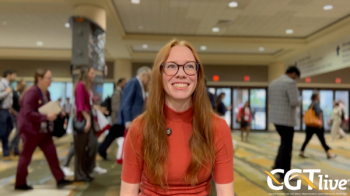
FDA Grants Fast Track Designation to Tipifarnib for the Treatment of Patients with HNSCC
The drug candidate tipifarnib (Zarnestra) is being clinically studied for the treatment of patients with HRAS-mutant head and neck squamous cell carcinoma after progression on platinum therapy.
The FDA has granted fast track designation to the drug candidate tipifarnib (Zarnestra) for the treatment of patients with HRAS-mutant head and neck squamous cell carcinoma (HNSCC) after progression on platinum therapy, according to Kura Oncology, the agent’s developer.1
“We are very encouraged by our growing body of clinical data for tipifarnib in HRAS-mutant HNSCC and believe that the FDA’s Fast Track designation puts us one step closer to delivering a precision medicine treatment for patients with this devastating disease,” Antonio Gualberto, MD, PhD, head of development and chief medical officer for Kura Oncology, said in a press release.
Tipifarnib is a potent, selective, and orally bioavailable inhibitor of farnesyl transferase. In previous studies, tipifarnib showed compelling and durable anti-cancer activity in certain patient subsets; however, no molecular mechanism of action has been determined that could explain its clinical activity across a range of solid tumor and hematologic indications.
Kura Oncology is currently looking to identify the patients who would most likely benefit from tipifarnib, having received multiple issued patents for the drug and providing patent exclusivity in the U.S. and foreign countries.
The company also provided enrollment guidance for AIM-HN, an ongoing registration-directed trial of tipifarnib in patients with recurrent or metastatic HRAS-mutant HNSCC. The international, multi-center trial began in November 2018 and is expected to complete enrollment in the first quarter of 2021.
“Although we experienced some delays in site activation, we’re encouraged to have the vast majority of the participating sites now open, with a corresponding increase in the rate of screening,” Kathleen Ford, chief operating officer at Kura Oncology, said in a press release. “We recently presented impressive data from our phase II trial in the same patient population and we believe that awareness of these data will continue to increase HRAS mutation testing and enrollment.”
Data presented at the AACR-NCI-EORTC International Conference on Molecular Targets and Cancer Therapeutics held in Boston from October 26, 2019 to October 30, 2019 from the phase II trial indicated that 5 to 8% of patients with advanced HNSCC who showed the HRAS mutation showed responses to tipifarnib.2
The phase II study, which is still currently recruiting, is investigating the antitumor activity in terms of objective response rate of tipifarnib in subjects with locally advanced, unresectable or metastatic, relapsed and/or refractory tumors that carry HRAS mutations, for whom there was no curative therapy available. Only cohort 2 (head and neck squamous cell carcinoma) and cohort 3 (other squamous cell carcinoma) are currently open.
According to the National Cancer Institute, head and neck cancers account for approximately 4% of all cancers in the U.S.3 Researchers estimated that more than 65,000 men and women would be diagnosed with head and neck cancers in the U.S. in 2017.
References:
1. Kura Oncology Receives Fast Track Designation for Tipifarnib in HRAS Mutant HNSCC and Provides Enrollment Guidance for AIM-HN Trial [news release]. San Diego, California. Published December 16, 2019. globenewswire.com/news-release/2019/12/16/1960854/0/en/Kura-Oncology-Receives-Fast-Track-Designation-for-Tipifarnib-in-HRAS-Mutant-HNSCC-and-Provides-Enrollment-Guidance-for-AIM-HN-Trial.html. Accessed December 16, 2019.
2. Cancer Network. Tipifarnib Shows Responses in HRAS-Mutant Head and Neck Cancers. Cancer Network website. Published October 30, 2019. cancernetwork.com/article/tipifarnib-shows-responses-hras-mutant-head-and-neck-cancers. Accessed December 16, 2019.
3. NCI. Head and Neck Cancers. NCI website. Published March 29, 2017. cancer.gov/types/head-and-neck/head-neck-fact-sheet#how-common-are-head-and-neck-cancers. Accessed December 16, 2019.
Newsletter
Stay at the forefront of cutting-edge science with CGT—your direct line to expert insights, breakthrough data, and real-time coverage of the latest advancements in cell and gene therapy.
















































